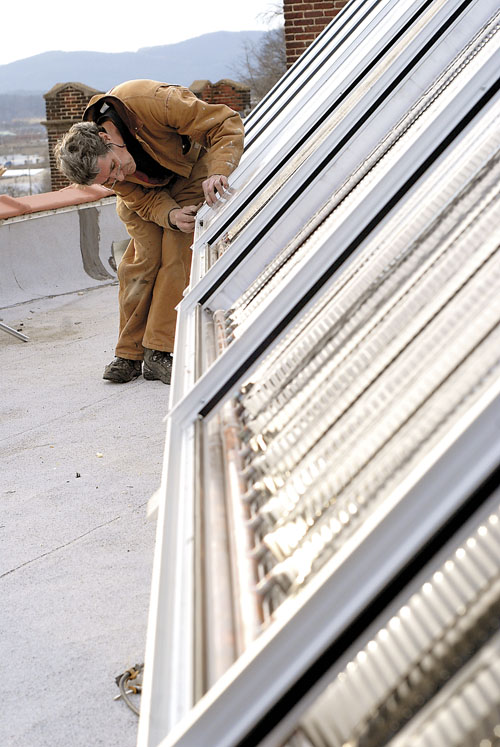What makes us specialChattanooga made a turnaround in three decades from being the nation's worst air city to a federally recognized "clean air" city.Chattanooga hosted the 1995 President's Council on Sustainable Development.In 2006, Chattanooga joined 838 other U.S. cities pledging in the Mayors' Climate Protection Agreement to reduce carbon dioxide emissions.Chattanooga in April launched a Green Committee citizen-visioning process to rejuvenate the city's campaign of sustainability. About 500 people came to brainstorm ideas.
Chattanooga wants to go green, and its plan is out on the roof.
Here's the landscape:
Green - as in grassy - rooftops to hold down heating and air conditioning costs while slowing the torrent of hard rains that can overwhelm storm drains and push sewage into the Tennessee River.
Glittering solar rooftops to harness the power of the sun and reduce carbon footprints and power bills.
The Walnut Street Bridge glows at night with its own self-contained micro-hydro power plant, which converts river current into electricity.
David Crockett, director of Mayor Ron Littlefield's new Office of Sustainability, says green is "in" again.
"Green is mostly common sense. It's something you can do to save money," he said.
Mr. Crockett, as a City Council member in the 1990s, helped forge Chattanooga's national and international image as an "environmental city."
At that time, city leaders wanted Chattanooga to build on its turnaround in 20 years from the nation's worst air city to a federally recognized "clean air" city.
The high point of that effort was in 1995, when the President's Council of Sustainable Development met here. Since then, other cities moved past Chattanooga's pioneering vision.
Now Mr. Littlefield, Mr. Crockett and members of a local green committee hope to seize the opportunity again.
With $1.8 million in federal stimulus money to retrofit buildings for energy efficiency - coupled with commercial and residential tax credits and grants - local officials and business owners look to the future.
Doug Stein, whose Stein Construction firm has paved much of Chattanooga, has helped form a new company, Earthscapes, to offer biodegradable mulch-filled "socks" to slow runoff and catch dirt and mud that would choke streams.
Frank Fischer, president of Volkswagen operations in Chattanooga, said VW also is on board with its $1 billion factory site designed with state-of-the-art environmental systems.
"The whole project is aligned - green city, green product and green plant," Mr. Fischer said.
